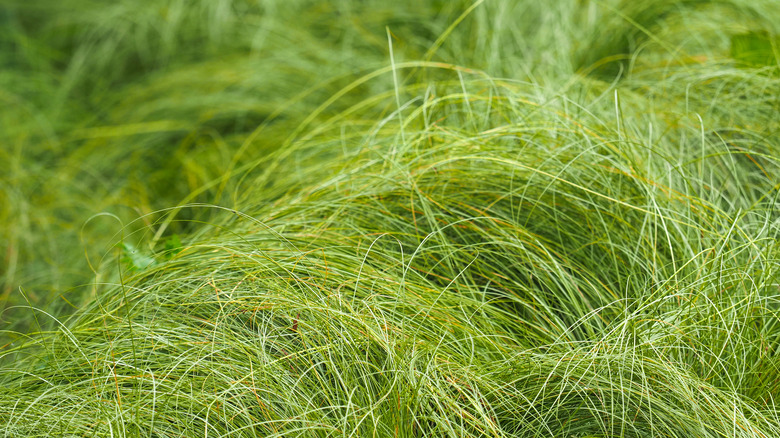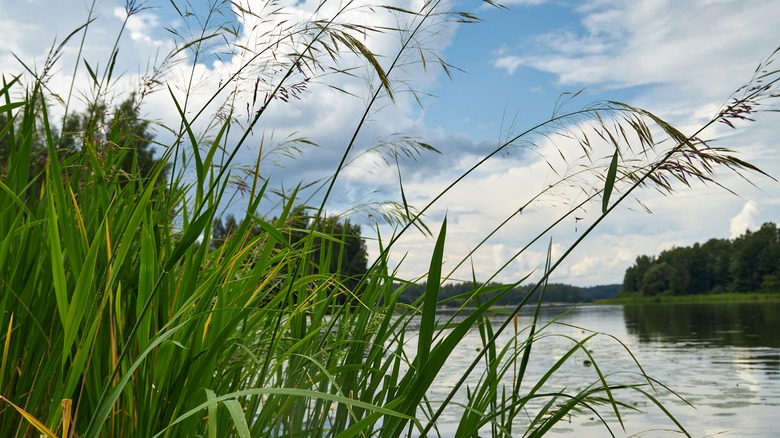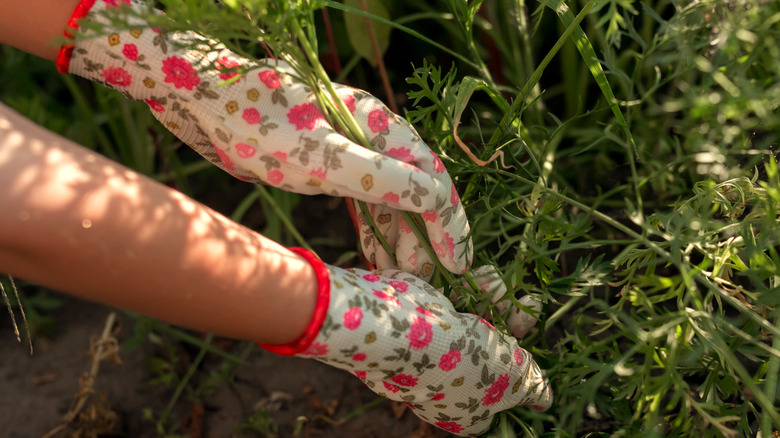Why Sedge Grass Is Growing In Your Lawn (& How To Get Rid Of It)
We may receive a commission on purchases made from links.
If you want a uniform lawn with the grass of your choice, you're probably annoyed when other plants and weeds try to invade. As you likely know, not all grasses are created equal — if you notice a grass with triangular stems among the other grasses in your lawn, it's probably sedge (Carex spp.). In the sedge grass genus, several different varieties range from 6 inches to 4 feet tall. They typically have their leaves arranged in clumps of three, and some produce greenish-white or brown flowers in the spring. Many people confuse this plant with nutsedge (Cyperus spp.), an even more relentless weed that is very difficult to manage.
Conversely, Carex species can become a lush turf or a nuisance weed, depending on whether they were intentionally planted or not. Varieties of sedge grass are native all over the United States, and they are particularly attracted to wet soil, producing unsightly clumps of weeds in your lawn. Whatever variety of sedge grass is native to your area, you may want to get rid of it to maintain the neat look of your yard. Keep in mind, if your lawn is frequently damp or soggy, you're much more likely to have a problem with sedge weed.
Why sedge grass is attracted to wet lawns
Sedge grass may be more prone to growing in your yard under certain conditions. In the wild, sedge grass often thrives along creek beds and riverbanks, and its thick, fibrous roots help hold the soil in place — fighting erosion. A wet lawn mimics its native conditions, making it more likely that sedge weed will invade. Poor drainage also attracts sedge weed. If you frequently notice standing water, you'll want to consider drainage solutions for your lawn.
If your soil is wet, it may become compacted if any weight is put on it, such as walking around a yard. This also makes it harder for moisture to drain by decreasing the size of channels — often called pores — in your soil. Since sedge grass is more tolerant of compact soil than other grasses, this makes it more likely to grow. You may want to try some solutions for your compacted soil. One easy fix is to allow grass clippings to remain on your lawn, which will then decompose and create more air space.
How to get rid of sedge weed
As a native — and often unwanted — species, sedge grass can be considered a weed. If you want to get rid of the weeds in your garden or lawn, you can first try pulling the sedge up by the roots. However, you'll want to be sure to wear gloves. Sedge grass's Latin name, Carex, means cutter — a reference to its sharp edges that can hurt bare skin. This method is also the most time-consuming, as you'll have to keep pulling the grass every few weeks until you completely get rid of it. You can also try cutting it back with a lawn mower or weed eater. Sedge grass does not tolerate being cut well, which will help kill it.
The best way to permanently get rid of sedge weed is to use a herbicide. Several options are available on Amazon, such as Bonide Sedge Ender and Sedgehammer Plus Turf Herbicide, or you can ask about options available at your local nursery. Make sure to read the package instructions fully before using, and always wear gloves and long sleeves when applying herbicide to your yard. If any herbicide gets on your skin or clothes, be sure to wash thoroughly right away. After several applications, your sedge weed will be gone. Then, you'll be able to enjoy your weed-free, grassy lawn again.


